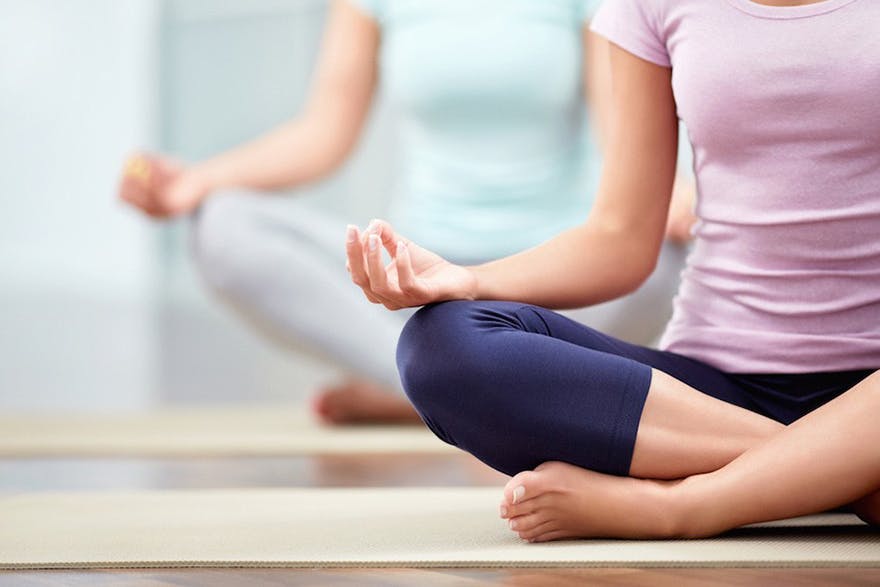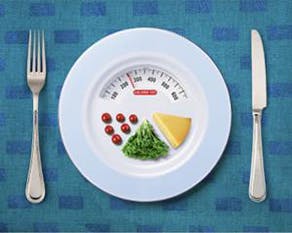10 Best Low-Impact Workouts
HEALTH & WELLNESS
10.21.2014

Low-impact workouts have gotten a bad rap: many people think that low-impact means no real exercise (and no real calorie burn). But nothing can be further from the truth. Low-impact exercises do burn calories, help strengthen the heart muscle, and keep you - and your joints - happy and healthy.
Speaking of joints; this is often the main reason why people take up low-impact exercises. Exercises that involve a lot of jumping or up and down motions (like running) and/or moving quickly in different directions (like basketball) can injure the joints. But low-impact activities don’t stress the joints, which means you have less chance of irritating already sensitive joints and of getting injured.
With that said, here are some of the best low-impact workouts* you can do outdoor this Spring (because why be indoors when you can be outside taking in the fresh air and scenery!):

Biking: Next month, May, may be National Bike Month—but it’s more than okay to get started this month, as the weather is getting nicer. I love biking—and try to get out to my local park whenever I can: it’s an enjoyable low-impact cardio workout, particularly if you’re riding somewhere with beautiful scenery. Plus, most people know how to ride a bike so there’s typically no training involved!
Something to keep in mind, though: experts say that regular biking may strengthen the heart but it doesn’t really strengthen bone (as many other low-impact exercises can do). That means that you should add in another type of bone-building activity, like ones listed here, to your weekly routine.
To increase your intensity: Just pick up your pace or add more miles to your ride. I have a cycling “computer” that my local bike store installed on my bike; they run as low as $25 but keep track of your miles so you can watch/track your progress—something I love to do!

Canoeing/Kayaking: Paddling a boat burns calories and strengthens your upper body—and allows you to take in the great scenery around you (what could be better!). What I love about paddling boats, too: you can do it with other people. We kayak every summer as a family because it gets our bodies moving and we’re able to spend quality time together. Definitely try it if you haven’t already! (But if you have shoulder problems, it’s better to skip this and opt for a different low-impact workout that doesn’t focus on the shoulders and arms.)
Golf: Golf is the perfect mind-body game; you’re working your body and helping to keep your mind sharp by strategizing your next swing. But to make this a super-effective workout: Skip the golf cart and walk the entire 18 holes. Carry your bag, too, and you’re helping to build upper-body strength (but try a two-strap bag attachment, rather than a single strap, to evenly distribute the bag weight, preventing back and shoulder pain). One other way to make golf an even more effective workout: use your wait time efficiently. Do stretches, yoga moves, and/or even a few pushups if you’re motivated!
In-line skating: I know what you’re probably thinking: In-line skating? That’s for kids! But nothing could be further from the truth: In-line skating can be done by adults and kids alike. You get the same great aerobic benefits as running, but without the pounding impact on your joints. It also helps improve your balance. Plus, it gives your legs one heck of a workout; do this regularly, and you’ll notice the muscles on your legs getting stronger. The only caveat: you must wear a helmet and protective gear that includes kneepads and wrist guards: one serious fall (which could be caused by someone other than yourself) and you could be looking at broken bones.
Tai chi: This ancient Chinese exercise—which involves gentle movements that “flow” into each other—helps increase flexibility and balance and reduces stress, but one thing it won’t do is burn a lot of calories. But if you’re looking for an extremely gentle and meditative workout (tai chi is often called a “moving meditation”) that can be done anywhere—alone or in a group—this form of movement may be right for you. Look for local listings near you as many groups offer outdoor workouts—often in the early morning or at sunset.

Swimming/water aerobics: Pool workouts are such an amazing exercise to do because they give you a cardio workout (good for strengthening the heart and burning calories) and tone muscles at the same time. (Water provides 12 to 14 percent more resistance than air, meaning your muscles are getting a great toning workout.) You also tend to burn more calories in the water because of this resistance (some experts say you burn up to 30 percent more calories, but this really depends on how hard you’re working in the water).
One of the best things about water aerobics (and any type of water workouts, including swimming) is you don’t have to worry about gravity. This means it’s so much easier to move joints in water without stressing them—making this the ideal workout for anyone, but particularly those with arthritis, back problems, or knee pain. So once the weather gets warm enough, head to that outdoor pool and start moving.

Walking: I’ve come to love walking because you can do it anywhere. Leave a pair of sneakers at work—and get out on your lunch hour. (Experts say that walking after eating helps with digestion.) Get up early and go out for a meditative walk before starting your day. And now that the weather is getting nicer, head to a park and try hiking off trail to change up your pace.
In fact, when it comes to walking, it’s your pace that determines how intense your workout is. Keep it easy, and walk slowly. But challenge yourself by: pumping your arms and walking faster, doubling your walking time from, say, 20 minutes to 40 minutes, and/or trying walking intervals (where you walk quickly for a brief period and then slow back down to your normal pace—and keep repeating for the remainder of your walk). You can even try walking up and down steps, like those famous outdoor stairs in Santa Monica, to burn more calories, strengthen your leg muscles, and build bone.
But one tip to keep in mind: you need the right shoes if you’re going to walk more. Any old shoes are fine once or twice, but a well-fitting pair of sneakers will help cushion your foot properly and give you the support you need. Not having the proper support can trigger foot and knee pain.

Yoga: The benefits you get from this popular exercise—offered both indoors and outdoors—are varied, depending on the type of yoga you do. Power yoga, for example, is where you move quickly through poses and get your heart rate up, burning more calories and strengthening your heart muscle. Hatha yoga, on the other hand, is a more gentle type of stretching yoga (one that I prefer, by the way!). But one thing: all yoga styles are low impact, increase flexibility, and improve strength—particularly in the chest and abs, the muscles that a lot of yoga poses challenge. You definitely can’t go wrong with yoga!
Bottom line: when it comes to low-impact activities, definitely try something new. It’s not only good for your body, your muscles, and your heart, it’s good for your brain, too. Studies show that taking on a new task or learning a new skill helps your memory skills stay sharp for years to come!
Be well, and stay healthy and strong!
* Be sure to check with your doctor—and get his/her okay—before starting any exercise routine.
Image Credits: LuckyImages/Shutterstock.com
Recommended Articles
The 5 Best Foods That Will Help Supercharge Your Brain
Amidst our busy schedule, it's important to retain our focus and memory. Resting alone is not...
Iron deficiency is a lot more common than you would think. A recent survey by SATA CommHealth(i...
Mars vs Venus: Understanding the His and Hers of Nutritional Needs
Mars vs Venus: Understanding the His and Hers of Nutritional Gaps Although their DNAs are...






